 The following story is taken from the book "Chess Phenomenon Bobby Fischer" by Aleksander Pasternjak. It is a lovely (and loving) work, originally published in Slovenian and now for many years out of print. A German language version was published without a date by Copress Verlag in Munich, excellently translated by Darko Dolinar. There are a few used copies available in Amazon Germany – I'd grab them if I were you. My own copy is in mint shape, and I tend to read it once every ten years.
The following story is taken from the book "Chess Phenomenon Bobby Fischer" by Aleksander Pasternjak. It is a lovely (and loving) work, originally published in Slovenian and now for many years out of print. A German language version was published without a date by Copress Verlag in Munich, excellently translated by Darko Dolinar. There are a few used copies available in Amazon Germany – I'd grab them if I were you. My own copy is in mint shape, and I tend to read it once every ten years.
To give you a feel for the contents here is some narrative from the first chapter – dutifully translated into English. At the end of the article you will find the games, with full analysis, on our JavaScript replay board. There you can analyse (with engine support) and pose any "What-if" and "Why-not" questions that might occur to you. And apart from that: it is not unlikely that you will learn some new tricks in the Sicilian.
The Sicilian Vespers
By Aleksander Pasternjak
It is the final round of the Portoroz Interzonal in 1958, in which the six finalists for the Candidates tournament to find a challenger to Mikhail Botvinnik's World Championship title will be chosen. The youngest participant is just fifteen years old and is playing against one of the tournament leaders. Robert James Fischer has black against Svetozar Gligoric, twenty years his senior and an experienced world-class GM.
Svetozar Gligoric – Robert Fischer [B98]
Portoroz Interzonal Portoroz (21), 1958
1.e4 c5 2.Nf3 d6 3.d4 cxd4 4.Nxd4 Nf6 5.Nc3 a6 6.Bg5 e6 7.f4 Be7 8.Qf3 h6 9.Bh4 g5!?
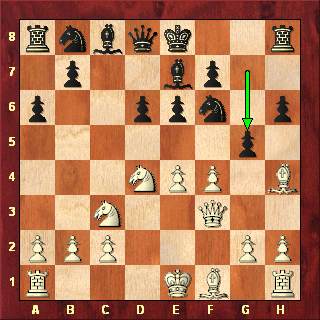
Gligoric stares at the lad in amazement. Bobby Fischer has just played a daring idea of Herman Pilnik in the Sicilian Najdorf. It is not just a surprise to his opponent, it has the entire playing hall stunned. Fischer has gone for the notorious "Sicilian Vespers."
The boy is covering his eyes with his long, bony fingers. He is calm, his gaze is steady, the eyes occasionally dart across the chessboard. Even at this early age Fischer is considered a great expert in the Sicilian Defence. His Yugoslav opponent is baffled: is the lad trying to trick him with some new analysis, or is he simply desperate?
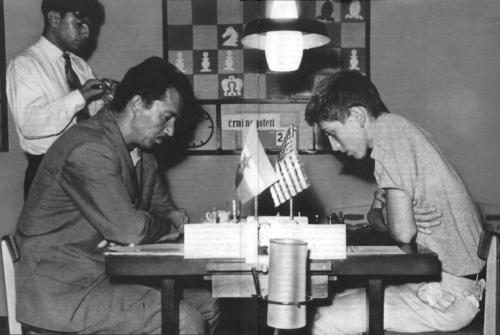
Gligoric vs Fischer at the Interzonal in 1958 in Portoroz
This famous encounter between Gligoric and Fischer actually began three years earlier. Fischer was using a line that had suffered an extraordinary fate at the Interzonal in Gothenburg 1955. The Argentinean players, Miguel Najdorf, Oscar Panno and German Pilnik had based their preparation for this tournament on the Najdorf Variation, but Paul Keres had defeated Panno with a novelty in the first part of the tournament, refuting their entire strategy of the South American team.
The Argentineans were in panic. But on a free day the temperamental Pilnik had come up with the 9...g5 improvement that seemed to give them a powerful weapon against Keres' new move. The Argentinean team and their helper spent 24 hours analysing every aspect of the devilishly clever Pilnik idea. In the end the great Najdorf made the decision: we play 9...g5.
This led to the "total chess war" in Gothenburg. Argentina was the second-strongest chess nation after the Soviet Union, and in round 14 chance would have it that the three top players had black against the leading Russians Efim Geller, Boris Spassky and Paul Keres.
About half an hour into the round the Argentinean plan struck like lightening out of a clear sky. Almost simultaneously the three GMs played the fateful move 9...g5, and the Soviet "analysis engine" came to a grinding halt.
The tension in the playing hall was tremendous. Three demo boards showed identical positions, and while the Russians sat there in deepest thought Miguel Najdorf wandered around the hall, merrily asking people what they thought of his position. One of them was Svetozar Gligoric, who was writing chess columns in Gothenburg.
On the boards the sharpest tactician amongst the Russian players, Efim Geller, was the first to play. After 30 minutes he played a three-move combination, sacrificing a knight, offering a bishop and then playing a quiet bishop move: 10.fxg5 Nfd7 11.Nxe6 fxe6 12.Qh5+ Kf8 13.Bb5 Ne5 14.Bg3. Spassky and Keres took almost an hour to find the same moves, which marked the end of the Argentinean dream. All three games were lost by Najdorf, Panno and Pilnik in very similar fashion.
That is the story of the "Sicilian Vespers", the tale of a variation that had appeared like a comet and gone down in a blaze. Who would ever dare to play the line again? The answer: a fifteen-year-old, and in a decisive game, one of the most important in his career!
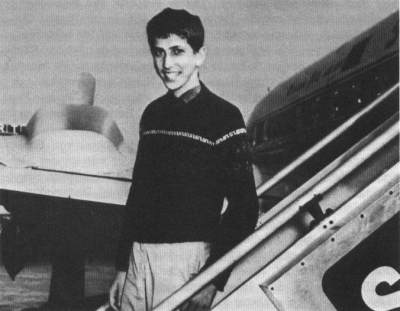
Fischer arriving in Portoroz
Fischer knew that Gligoric had witnessed the events in Gothenburg, and that he knew all the analysis the Soviets had come up with. In fact earlier in the year he had actually asked Gligoric innocently about the variation. It was the last thing the Yugoslav could have expected, to see the move 9...g5 played by his last-round opponent against him.

With some female admirers
In secret Fischer had been working very hard on the Pilnik line, spending many hours unravelling its secrets, even studying the Russian language bulletins from the tournaments in Sverdlovsk and Chelyabinsk in search of new ideas. In the day before his game against Gligoric he ordered breakfast, lunch and dinner in his hotel room, going over the material he had produced in his Brooklyn laboratory, agonising over the decision whether to play the line in this decisive game or not.
10.fxg5 Nfd7 11.Nxe6 fxe6 12.Qh5+ Kf8 13.Bb5 Rh7!N
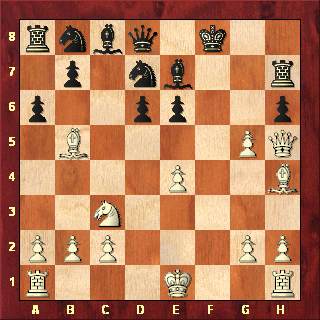
At the board in Portoroz Gligoric slowly began to realise that he had run into the firestorm of home preparation. The psychological advantage was entirely on Fischer's side. After the 13th move the young man got up for the first time and wandered around the hall. He was on familiar terrain and could spend some time looking at the other games. Gligoric on the other hand sat there, bent over the board, deep in thought. Behind him stood Mikhail Tal with sparkling eyes, obviously enjoying the complications he could see in this dramatic position.
Chess is like a symphony. The first phase of this piece was a furioso, leading to a quiet second movement, a positional struggle between two very different personalities. Fischer's 13th move blocked the path to White's mating attack, the rook on h7 held the tattered black position together with unusual tactical plans. But most importantly it forced his opponent to use all his energy solving problems which the lad from the USA had worked out up to move 30 at home.
But it was not without risk. Take a look at the standings before the final (21st) round:

Fischer's main rivals had easier tasks: David Bronstein had to play Rodolfo Cardosso, a Philippine IM who had lost five games in a row in this tournament. Fridrik Olafsson faced IM Boris de Greiff from Columbia, the second-last in the table. Ludek Pachman and Laszlo Szabo had Raul Sanguinetti and Oscar Panno, both without any further ambitions in this tournament.
In the previous 20th round Fischer had almost lost his place in the Candidates. Playing white against Cardosso he ran into some home preparation and, after taking a poisoned pawn on b7, found himself into a hopeless position. But with incredible determination Fischer managed to find all the right moves and, in a filigree 62-move effort he beat Cardosso to retain his chances for the Candidates.
Now in the last round Fischer had to play for a win against one of the top players of the tournament (and the world), and he had to do it with the black pieces. Svetozar Gligoric had won four of his last five games and was in the form of his life.
14.Qg6 Rf7 15.Qxh6+ Kg8 16.Qg6+ Rg7 17.Qxe6+ Kh8 18.Bxd7 Nxd7 19.0-0-0 Ne5 20.Qd5 Bg4 21.Rdf1 Bxg5+ 22.Bxg5 Qxg5+ 23.Kb1
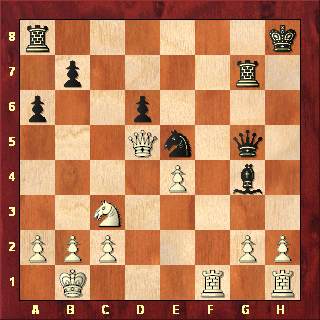
At some stage Gligoric proposes a draw, which Fischer rejects, forcing the Yugoslav GM to play on with three pawns for a piece. Fischer is determined to win the game and maintains his positional advantage, even though Gligoric plays some very clever defensive moves.
23...Qe7 24.Qd2 Be6 25.g3 Rd8 26.Rf4 Qg5 27.Qf2 Kg8 28.Rd1 Rf7 29.b3 Qe7 30.Qd4 Ng6 31.Rxf7 Qxf7 32.Qe3
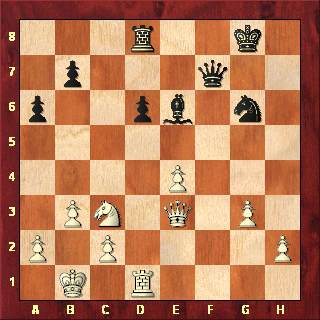
The tension has reached its highest point, Bobby Fischer is twitching in anticipation. But at this dramatic moment he sees a tragedy taking place on an adjacent board. David Bronstein, who had not dropped a single game so far in this tournament (or in two previous Interzonals) has a completely lost position in his game to Cardoso.
Suddenly the tension is gone, Fischer has a sure place in the Candidates. In the above position he accepts the draw and leaves the tournament hall beaming and proud. When asked by journalists about his greatest achievement in Portoroz he says "overtaking the great David Bronstein!" And his goal in life: "To fight for the world championship title against Mikhail Botvinnik."

Replay and analyse the games from this article
You probably know that in our replay boards there are a large number of functions you can use to really appreciate the games. Recently we published a comprehensive tutorial on how to get the most out of the live broadcast game viewer. Learn about all the powerful features and buttons that make the ChessBase's replay one of the best watching experiences around.

One big advantage is that you can start an engine (fan icon) that will help you to analyse. You can get multiple lines of analysis by clicking the + button to the right of the engine analysis window. The "!" key, incidentally, shows you the threat in any position, which is incredibly useful in the case of unclear moves.
 There is one more thing you can do that is a lot of fun: Clicking on the rook icon below the notation window allows you to play out any position in the game against Fritz, at your level of playing strength (e.g. "Club Player"). The folder icon will retrieve lot more games in this line.
There is one more thing you can do that is a lot of fun: Clicking on the rook icon below the notation window allows you to play out any position in the game against Fritz, at your level of playing strength (e.g. "Club Player"). The folder icon will retrieve lot more games in this line.
Note that your analysis, where you can delete, move or promote lines, is stored in the notation as new variations. In the end you will find the game with your analysis in the cloud. So nothing is ever lost.
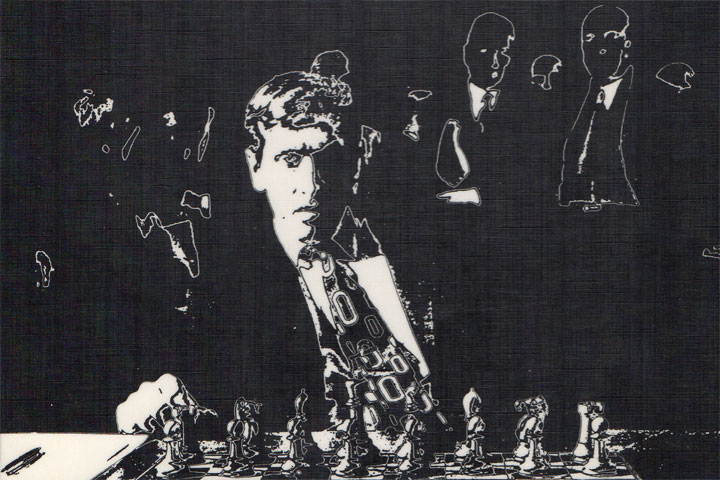

















 The following story is taken from the book "Chess Phenomenon Bobby Fischer" by Aleksander Pasternjak. It is a lovely (and loving) work, originally published in Slovenian and now for many years out of print. A German language version was published without a date by Copress Verlag in Munich, excellently translated by Darko Dolinar. There are a few used copies available in Amazon Germany – I'd grab them if I were you. My own copy is in mint shape, and I tend to read it once every ten years.
The following story is taken from the book "Chess Phenomenon Bobby Fischer" by Aleksander Pasternjak. It is a lovely (and loving) work, originally published in Slovenian and now for many years out of print. A German language version was published without a date by Copress Verlag in Munich, excellently translated by Darko Dolinar. There are a few used copies available in Amazon Germany – I'd grab them if I were you. My own copy is in mint shape, and I tend to read it once every ten years.










 There is one more thing you can do that is a lot of fun: Clicking on the rook icon below the notation window allows you to play out any position in the game against Fritz, at your level of playing strength (e.g. "Club Player"). The folder icon will retrieve lot more games in this line.
There is one more thing you can do that is a lot of fun: Clicking on the rook icon below the notation window allows you to play out any position in the game against Fritz, at your level of playing strength (e.g. "Club Player"). The folder icon will retrieve lot more games in this line.




